|
Comment on this article
A Place for Yale’s Stuff
Collections and conservation on the West Campus
September/October 2010
Photographs ©Christopher Gardner
The West Campus will provide Yale’s museums with bigger and better space for storage, conservation, and study of their collections than ever before. Some parts of their holdings are already on-site: the Peabody Museum’s holdings include portions of its extensive zoology, ethnography, and scientific instruments collections.
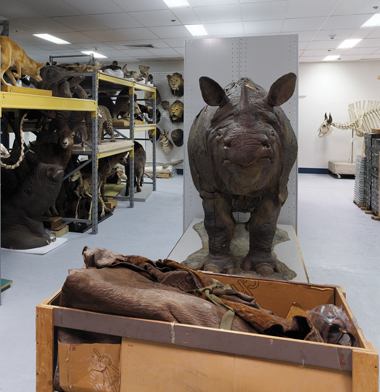
The rhinoceros was a circus performer, donated to Yale by the Ringling Bros. and Barnum & Bailey Circus. The elephant whose skin is preserved in the wooden crate in the foreground also came to Yale by way of the circus. (They say the elephant escaped a Hamden parade and took off up Dixwell Avenue before he was shot; Yale got the remains.)
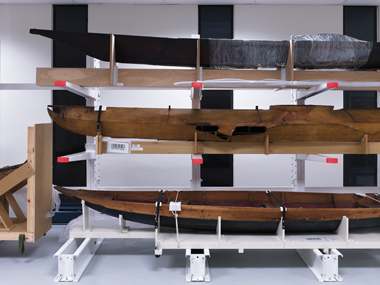
The top two boats are arctic kayaks. The third boat is a canoe from Suriname, South America.
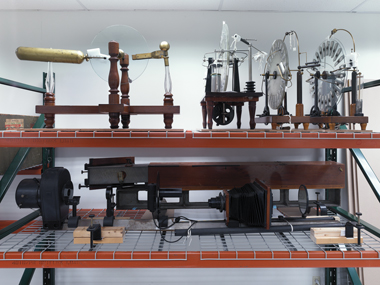
A set of historical scientific instruments includes several devices used to generate static electricity, for research and demonstration in the days before scientists could plug into a wall outlet for power.
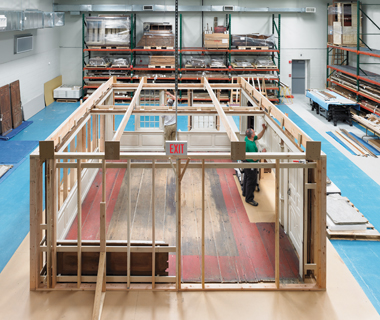
The so-called Gilead room consists of the wall paneling, floor, fireplace, and summer beam from the parlor of an eighteenth-century house in Hebron, Connecticut.
Yale purchased the room’s fittings in 1930, but they have been held in storage ever since, without being assembled. Curators now plan to install the room in the University Art Gallery. A team of conservators and curators spent the past year restoring the pieces and mounting a trial reassembly on the West Campus, where space for such projects is plentiful. It will be partially disassembled and brought back to New Haven for installation when the Art Gallery’s renovation is complete in 2012.
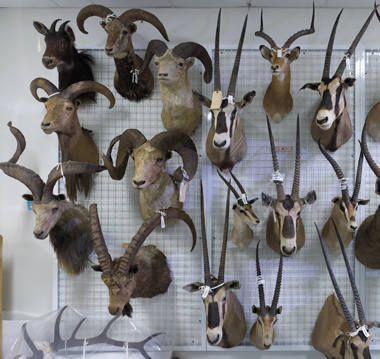
Yale’s large collection of taxidermy owes much to the big-game hunters of the twentieth century. Many of the Peabody’s animal heads were donated by A. C. Gilbert ’09MD, inventor of the Erector Set, and other Yale alumni who shot the creatures on trips to Africa and Alaska.
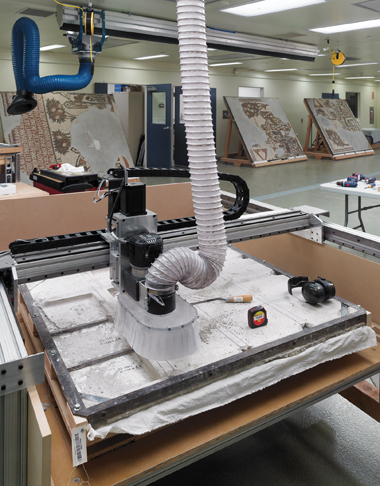
The Art Gallery is using a room at the West Campus to work on the restoration of an extensive sixth-century Byzantine mosaic excavated in Jordan in the 1930s. The tiles are being carefully removed from a concrete backing that was applied when they arrived at Yale. The device in the foreground is a computerized machine designed to cut off the concrete without damaging the tiles. A diamond drill bit is hidden under the white hood, and the hose reaching to the ceiling carries dust away from the piece of mosaic, which is upside down on the work table.  |







